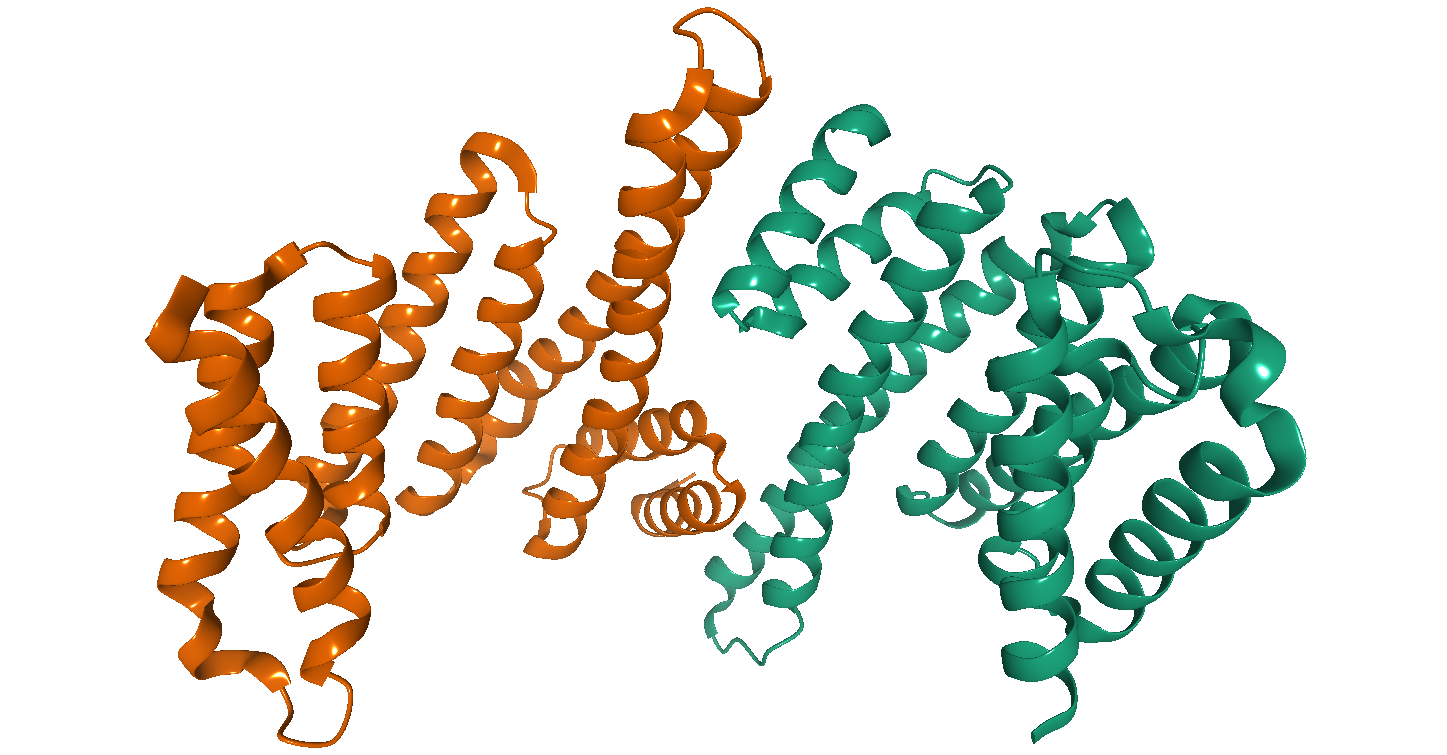14-3-3 protein
14-3-3 proteins are a family of conserved regulatory molecules expressed in all eukaryotic cells. They were first identified in brain tissue in 1967 by Moore and Perez during studies of brain phosphoproteins. The name "14-3-3" refers to the proteins' migration pattern on DEAE-cellulose chromatography, where they were found in the 14th fraction and had a 3.3 S sedimentation coefficient. These proteins have since been recognized for their role in a wide range of vital cellular processes, including signal transduction, cell cycle control, apoptosis, and cellular stress responses.
Structure and Isoforms[edit | edit source]
14-3-3 proteins are approximately 30 kDa in size and form either homo- or hetero-dimers. Each 14-3-3 monomer has a conserved amphipathic groove that interacts with phosphorylated serine/threonine-containing motifs in target proteins. In humans, there are seven isoforms of 14-3-3 proteins, named beta (β), gamma (γ), epsilon (ε), sigma (σ), zeta (ζ), tau (τ), and eta (η), encoded by different genes. These isoforms exhibit high sequence homology but can have distinct expression patterns and functions.
Function[edit | edit source]
14-3-3 proteins play a crucial role in a broad array of cellular mechanisms. By binding to phosphorylated motifs on target proteins, they can alter the target's activity, localization, and stability. This interaction is essential for the regulation of various signaling pathways involved in cell proliferation, survival, and apoptosis. For example, 14-3-3 proteins can sequester cyclin-dependent kinase inhibitors (CDKIs) in the cytoplasm, thereby promoting cell cycle progression. They are also involved in the regulation of apoptosis through interactions with proteins such as BAD and BAX.
Clinical Significance[edit | edit source]
Given their role in critical cellular processes, alterations in 14-3-3 protein expression or function have been implicated in the pathogenesis of several diseases, including cancer, neurodegenerative diseases like Alzheimer's disease, and metabolic disorders. In particular, the sigma isoform is a tumor suppressor that is often downregulated in various cancers. Additionally, 14-3-3 proteins have been studied as potential biomarkers for disease diagnosis and prognosis, as well as targets for therapeutic intervention.
Research Tools[edit | edit source]
14-3-3 proteins are also valuable research tools. For instance, they are used in yeast two-hybrid screening for identifying protein-protein interactions. Moreover, the development of 14-3-3 protein inhibitors is an area of active research, aiming to modulate 14-3-3-mediated signaling pathways for therapeutic purposes.
Navigation: Wellness - Encyclopedia - Health topics - Disease Index - Drugs - World Directory - Gray's Anatomy - Keto diet - Recipes
Search WikiMD
Ad.Tired of being Overweight? Try W8MD's physician weight loss program.
Semaglutide (Ozempic / Wegovy and Tirzepatide (Mounjaro) available.
Advertise on WikiMD
WikiMD is not a substitute for professional medical advice. See full disclaimer.
Credits:Most images are courtesy of Wikimedia commons, and templates Wikipedia, licensed under CC BY SA or similar.
Contributors: Prab R. Tumpati, MD


